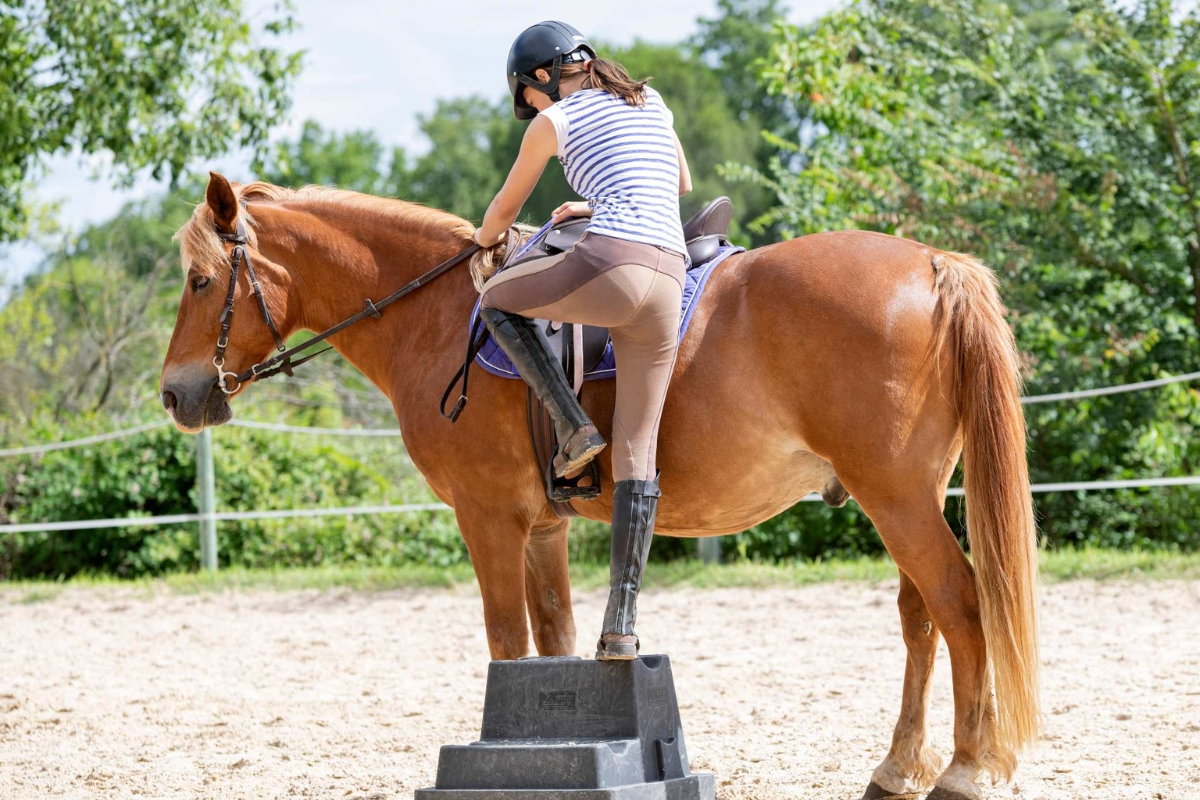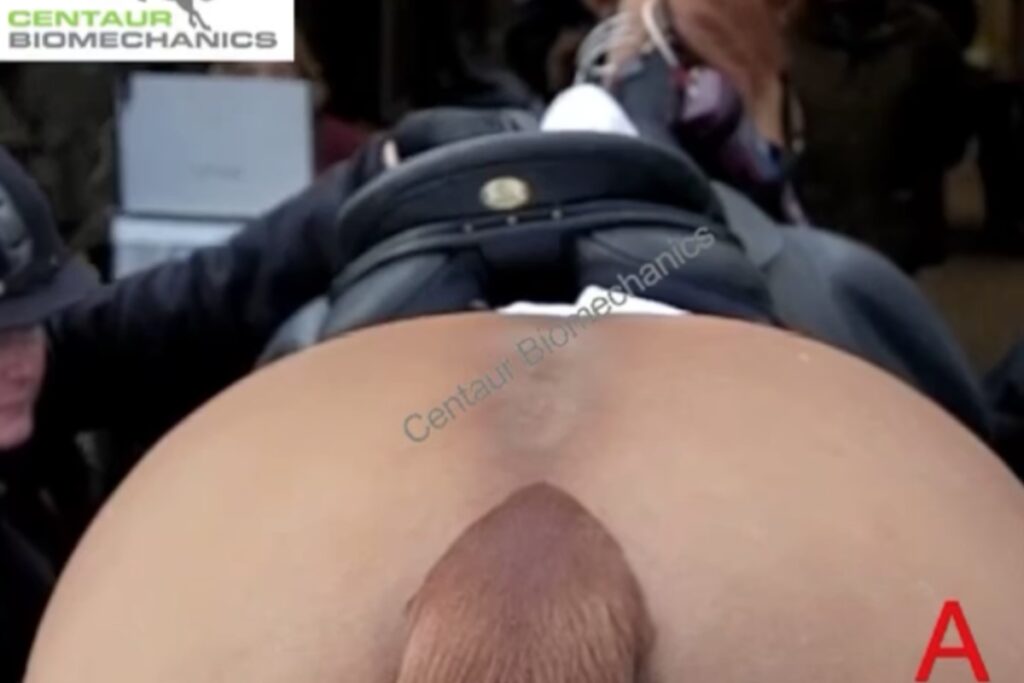Menu

In this article Centauer Biomechanics stress an often overlooked problem concerning the hight of a rider's mounting block.
Mounting the horse seems like a routine task performed daily. However, mounting technique and the height of the mounting block should be considered. When mounting, the rider’s weight is supported by the stirrup and the rider then lifts their centre of mass up. During this process, the saddle is pulled over to the left, which causes the back of the saddle to cross the midline (spine). As a function of the saddle being pulled towards the rider, along with the rider’s weight, an area of high pressure (> than a horse landing over 1.30m) on the right side of the horses’ back is created. As a strategy to withstand the forces from the mounting rider, the horse will alter its posture and limb loading. As has been said in previous blogs and publications, horses develop a compensation strategy to alleviate any discomfort caused, in this case from mounting.
Rider height affected saddle pressures when mounting; a smaller rider had higher pressures than a taller rider. It is thought that this is due to the length of the rider’s levers (legs) and the need for the smaller rider to pull the saddle (and horse) towards them as opposed to a taller rider, who could direct their centre of mass up and over, thus reducing the pressures when mounting.
Rider fitness can also have an effect; athletic riders were able to bounce and generate greater force when pushing off from the ground, raising their centre of mass vertically, versus the less athletic riders who had less force on push off, as a result, used a pulling mechanism to mount (i.e. pulling the horse towards them).
Another area to consider is how the rider descends on the saddle - riders who land “heavy”, create areas of high pressures towards the back of the saddle.
It is appreciated that the majority of riders do not mount from the ground. Instead, riders tend to use an easy to move, portable stool or step. Although this is positive, mounting block height should also be considered relative to horse height. It was demonstrated that a small mounting block of 22.5” did not help reduce saddle pressures when mounting. In contrast when using a tall mounting block, defined as a mounting block where the rider can put their foot in the stirrup and then mount as if stepping onto the horse. As the “mounting” (from foot off to seated) process time was shortened this was associated with reduced saddle pressures when mounting.
Therefore, the higher the mounting block, the better, to help reduce pressures beneath the saddle. Having someone hold the opposite stirrup is advantageous and recommended even when using a high mounting block.
How much does it affect the horse's back when mounting the horse? Watch the video below - just press the picture.
